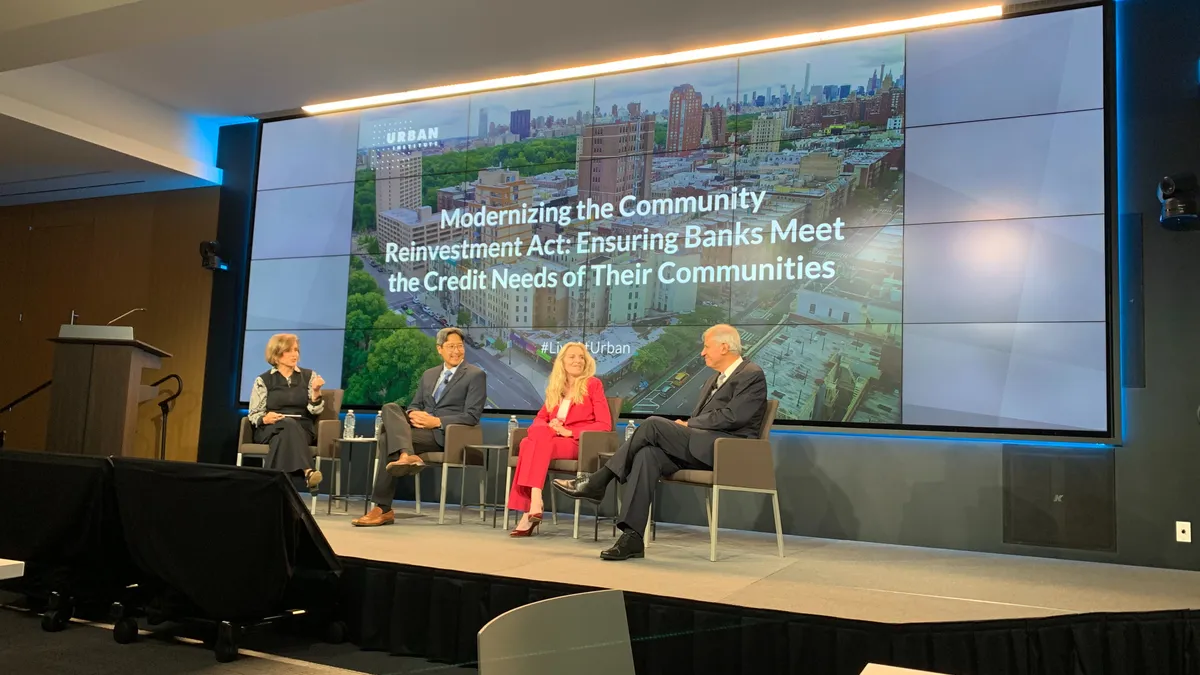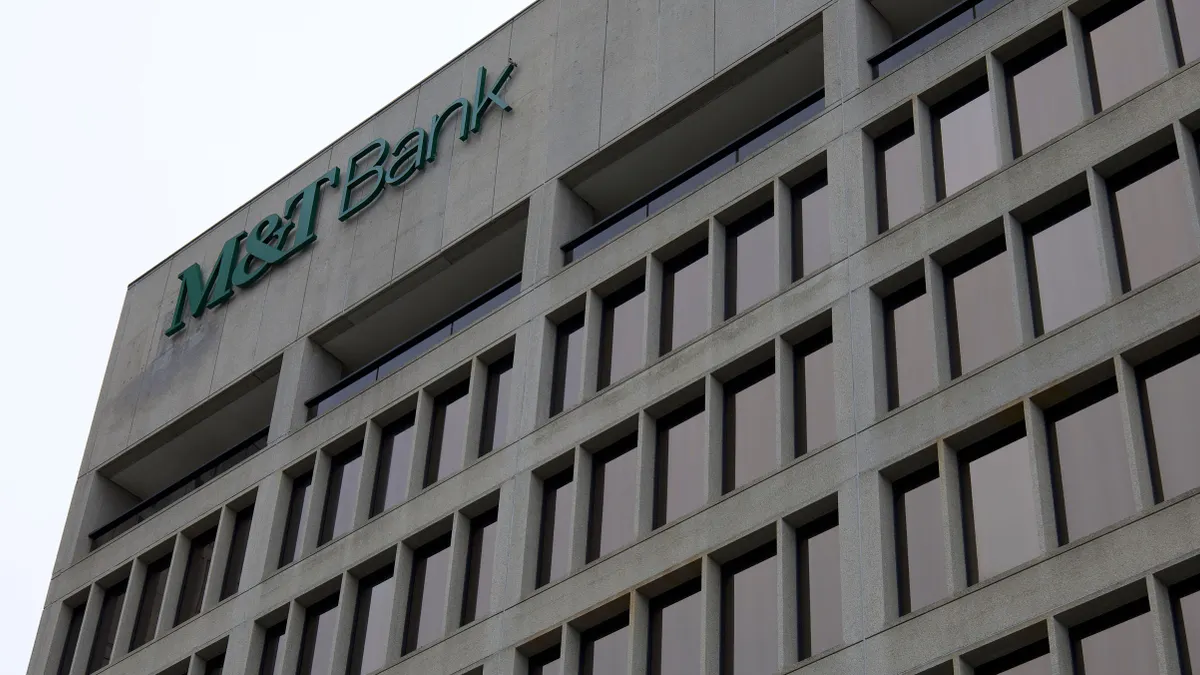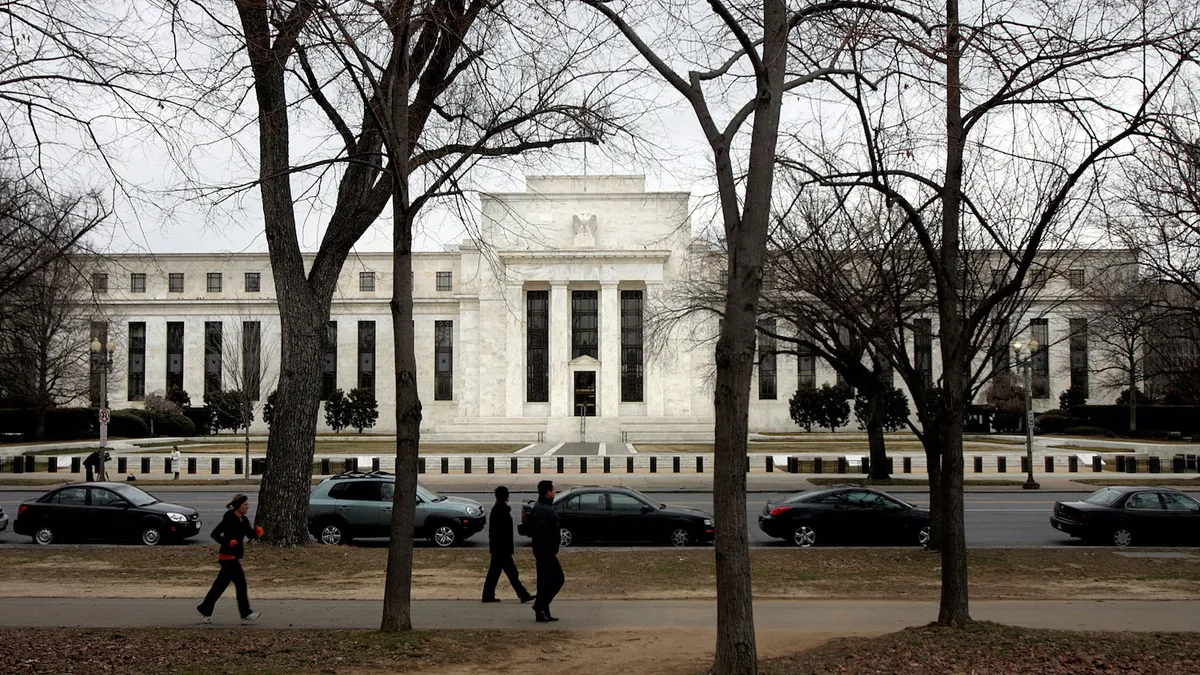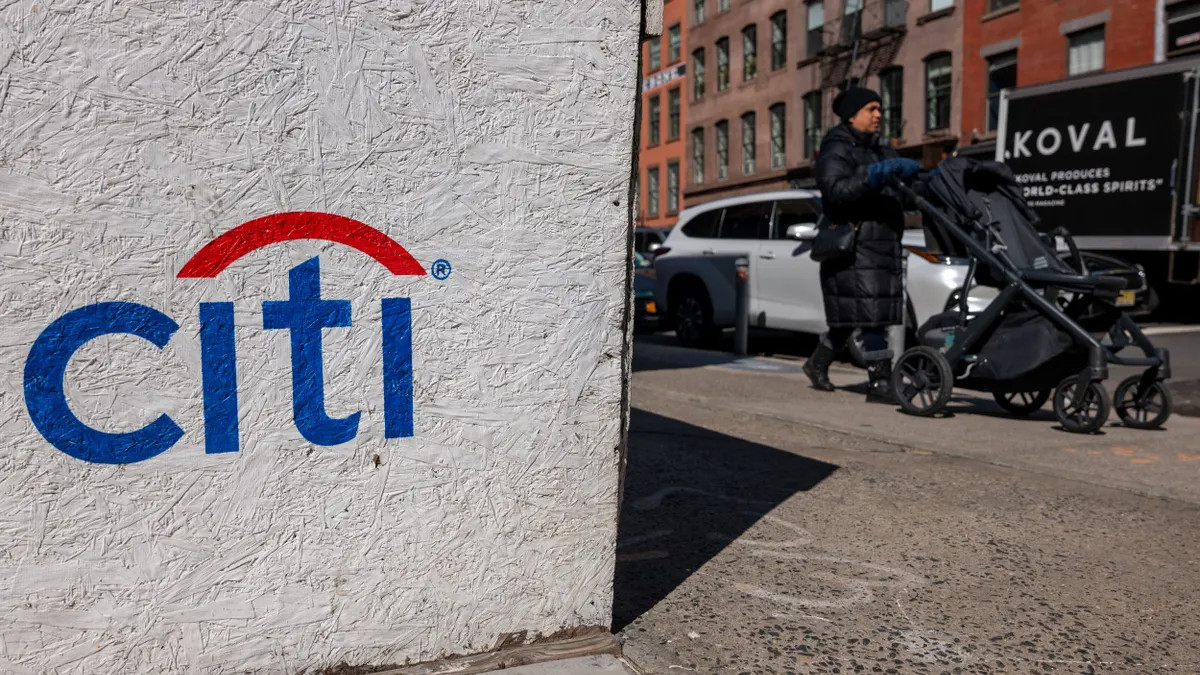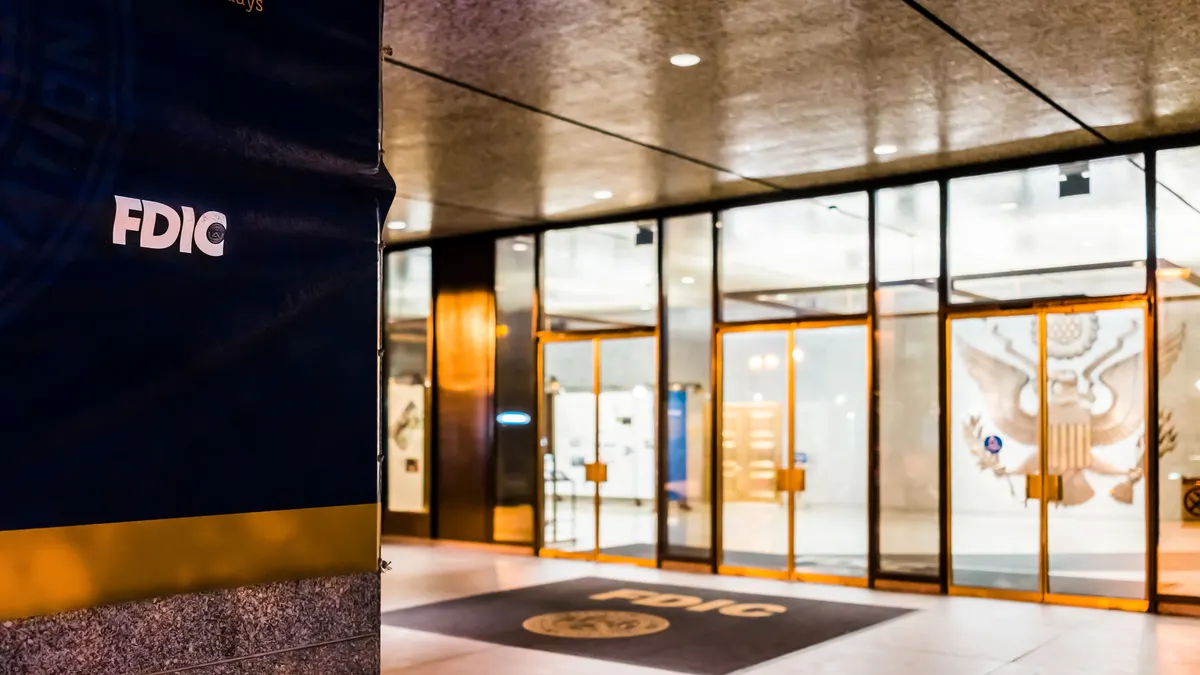Top bank regulators shared the stage at an event hosted by the Urban Institute on Friday, where they discussed the historic revamp of a decades-old anti-redlining law that requires banks to detail how they lend in low-income areas.
During the gathering – a rare occasion in which all three agency leaders met in a public setting – Acting Comptroller of the Currency Michael Hsu, Federal Reserve Vice Chair Lael Brainard and FDIC Acting Chairman Martin Gruenberg touted the benefits of taking a unified approach to updating the Community Reinvestment Act (CRA), in an attempt to adapt the 1977 law to today’s banking landscape.
The CRA has come under fire in recent years because it hadn’t undergone a significant overhaul since 1995, and a rewrite is now underway.
“The CRA hasn't had a substantive rewrite for a quarter-century,” said Brainard, who called the interagency effort to revamp the law a “once in a generation opportunity.”
“We believe that the proposal that we put out will strengthen the CRA and make it updated for today's banking system, today's communities and the future of banking in the way communities develop by strengthening credit, strengthening investments and strengthening banking services in those communities that have traditionally faced the greatest challenges,” she said.
The joint proposal, which the three regulatory agencies are accepting comments on through Aug. 5, is in contrast to the proposal the OCC released on its own just over two years ago under Trump-era Comptroller Joseph Otting.
Otting’s 372-page revamp drew pushback for not garnering the support of the Fed or the FDIC. Critics also took issue with the pace at which it was released, calling the effort rushed.
Otting’s 2020 revamp of the CRA was rescinded by Acting Comptroller Hsu in December, reverting the rule to its 1995 form.
The current, unified approach to the CRA is, “the one that really matters,” Hsu said during the panel discussion.
“There’s a saying, ‘Faster alone and farther together.’ I think that’s reflected here,” he said.
The biggest takeaway of the CRA rewrite addresses the changing nature of lending, Gruenberg said.
“CRA has always been tied to the branch network, facility-based assessment areas. And just to be clear, the branches remain critically important,” he said, “But at the same time, we also know that an increasing part of the banks’ lending and community investments are outside of the traditional assessment areas.”
Advocates pushing for a rewrite of the law have long argued the growth of mobile and online banking is not adequately addressed in the current model, which uses branch footprints as central metrics of CRA tests.
Gruenberg said the proposed rule is designed to better capture the idiosyncratic business models of banks, some of which may have a large branch network, but others of which may have only one branch or no branch at all.
“This approach really changes the center of gravity for CRA going forward and really, I think, is one of the key things that strengthens the rule,” he said.
The proposal also lets large banks consider community development activities nationwide as a separate metric and clarifies what constitutes community development — a designation that would include investments in childcare, education, workforce development, job training, health services, financial literacy efforts and revised parameters for affordable housing.
The rule creates strong incentives for banks to partner and invest in with Community Development Financial Institutions (CDFIs) and Minority Depository Institutions (MDIs), Brainard said.
“We saw in the [Paycheck Protection] program who was there, getting to the last mile, getting to those underserved small businesses and households," she said. "It was the CDFIs and MDIs that had those relationships with communities of color as well as women-owned businesses.”
The revamp gives banks credit for investing in climate preparedness programs, Hsu said, representing a shift from a sole focus on recovery when it comes to climate change.
“There’s a more explicit focus and shift to preparedness,” Hsu said, adding banks can receive credit in areas such as investments in green spaces and cooling centers amid rising temperatures, as well as revitalization of affordable housing, structures which may be prone to damage from extreme weather. “A lot of this is just recognizing those needs and risks, and creating some space where there are explicit avenues for CRA activities to be relevant."


